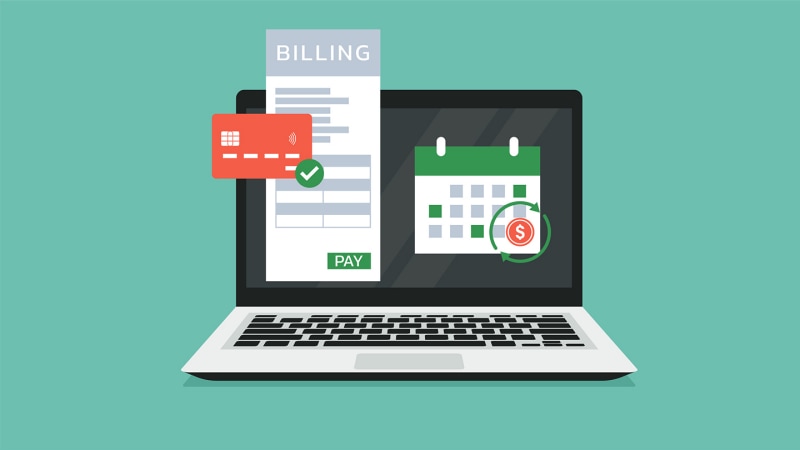How long does it take to improve your credit score with Chase Credit Journey's® credit planning feature?

The fast pace of daily life coupled with a societal pressure to be "on" 24/7 can sometimes make planning feel like a mountainous task, especially when finances are involved. It can be difficult to decide what your financial outlook is going to look like when you're struggling to make ends meet and desperately trying to make sense of all the options out there.
However, you can still make achievable, realistic goals for yourself. Even if it feels like you can't make an impact on your financial wellness right now, simply thinking about making some positive changes to your credit score is a commendable step towards creating a brighter future for yourself.
Are you considering taking your credit score to the next level, but not sure how long it will take to see changes?
Whether you're starting with poor credit or a strong credit score, the Chase Credit Journey's® credit planning feature powered by Experian™ helps put you on the road to helping improve your score in 3, 6, 9 or 12 months. Let's explore more about this feature in detail below.
How to get my credit score improvement plan
Before you can reap the benefits of the credit planning feature, you'll need to enroll in Credit Journey®, a free online tool that gives you access to a free VantageScore® 3.0 credit score, an Experian™ credit report and resources to help you understand what your credit score means.
From there, you'll want to go to the "Insights" tab of the Credit Journey dashboard and click "Score Planner." This is where you can begin establishing a credit score goal.
Set your score goal
To set a goal, first tell us about your financial aspirations. What are you looking to achieve? Are you planning on buying a car? Considering a home? You'll be prompted with options to choose from to help you navigate and determine the right plan for you.
Choose your timeframe
Next, choose a timeframe—this is the duration that you'll set for achieving your new score goal. We'll use your Experian™ credit report to set a score goal based off whether you're looking to achieve it within 3, 6, 9 or 12 months. You can always create a new plan if you want to adjust your goals.
Regardless of the timeframe you choose, the stated goal will be to improve your score by more than 5 points. Of course, your points may vary. This is simply the minimum. Depending on a range of factors, your score could potentially improve beyond that.
Receive your personalized action plan
Finally, get your personalized action plan. After you input financial aspiration and timeframe needed to help set up your goal, you'll receive a personalized action plan provided by Experian™ to help you start taking action today to help improve your score. At each step, you'll receive insights and details about what you can do today with your current accounts to help improve your score and stay on track.
Simply put, you provide the data and Experian™ will give you the steps to help you get to your desired results. You'll receive a reasonable and realistic action plan you can take to help achieve the financial goal selected within the timeframe chosen.
Is the timeline for your score goal personalized?
Yes—you can pick from 3, 6, 9 or 12 months. Deciding which timeframe you want to go with may impact your personalized plan, or you may need to adjust your goals if your score cannot be achieved within the timeframe that you're choosing.
How long does it normally take to raise your credit score?
Setting up your personalized action plan and following it can help raise your credit score. But how long it takes will depend on each individual and multiple financial factors. There might even be unforeseen situations which may imply a throwback such as medical expenses.
Whether you've set a short-term goal or a year-long goal, in many cases, it's even possible to achieve your score goal ahead of the timeframe that you've set for yourself. This is only if things are going according to plan—for example, your timeline for achieving a goal could sway if you've recently made an unexpected, large purchase.
What other steps can you take to raise your credit score?
Setting a score goal isn't the only way to maximize your opportunities to improve your credit score. By enrolling in Chase Credit Journey, you're accessing ample resources to assist you on your path to stay on top of your credit score.
For example, you can choose to enroll in both credit monitoring and identity monitoring services. These help you to monitor your credit and stay alert of any suspicious financial activity. Staying ahead of potential threats like fraud or theft can help better secure your credit score and keep it healthy as you continue to raise it.
You'll also have access to information to help answer your biggest questions about credit. Are you trying to improve your score but don't know which accounts or debts to begin paying off? Are you considering a car loan and want to know what credit score you need and how to improve it? Credit Journey's free educational features can help you answer these questions.
Gain financial empowerment with credit planning
Having a personalized action plan may help set you on the path to establishing a higher credit score. Whether you're looking to improve it by just a few points or have a more ambitious goal in mind, you have time to take actionable steps and work towards a brighter financial future for yourself. No matter what situation you're in, this feature is here to help you and make sure you're feeling empowered about the choices you make about your credit each day.



